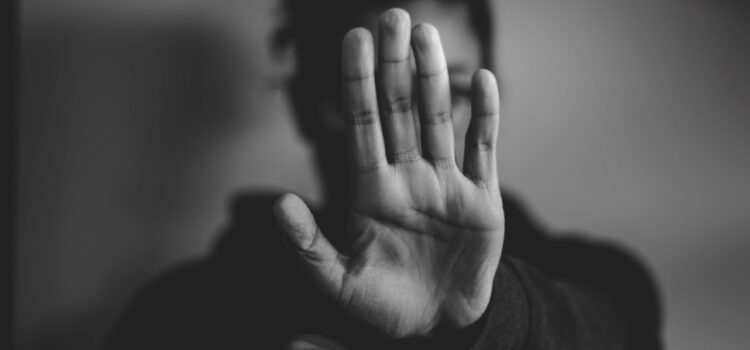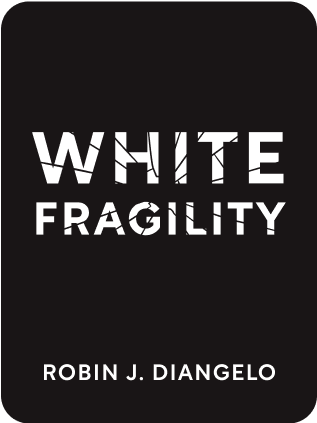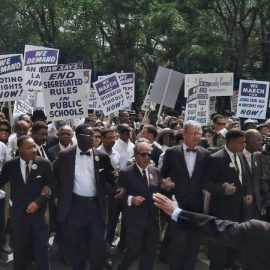

This article is an excerpt from the Shortform summary of "White Fragility" by Robin J. DiAngelo. Shortform has the world's best summaries of books you should be reading.
Like this article? Sign up for a free trial here .
What is overt racism? How does it differ from subtle racism?
Overt racism is an action that is outwardly and explicitly discriminatory on the basis of race. In White Fragility, subtle racism is pointed out as being at the root because people don’t think of their complicity in it.
Read on to better understand overt racism and subtle racism.
Overt Racism and Subtle Racism
Even as they disavow overt racism, white people act in myriad ways to bolster institutional racism. This is reflected in the ways that white people speak to each other about racial topics—often without ever explicitly mentioning race at all. This phenomenon is known as “race talk.”
Many experiences of ordinary American life are thick with racial meaning, even when they appear on the surface to be race-neutral. For example, white people automatically associate blackness with crime, danger, and undesirability. In part, this stems from living in highly segregated communities, as most white Americans still do. If you seldom come into contact with people of color, then your perceptions of them will come from stereotypes and media-amplified misrepresentations.
White people will engage in race talk on the topic of black crime by expressing concern about the “character” of a neighborhood, the test scores at a local school, or declining property values. Race does not have to be mentioned at all. It is assumed by all white participants in such a conversation that these negative attributes are definitionally tied to blackness. Such conversations serve to reinforce solidarity between white people (a topic we’ll delve into later in the chapter) and solidify white attitudes about the rightful ordering of the racial hierarchy.
These attitudes, in turn, guide white actions. Thus, in a phenomenon known as “white flight,” white Americans will leave neighborhoods that are becoming more diverse (one study showed that even a tiny 7 percent African-American population in a neighborhood can trigger white flight), citing the desire to send their children to “good” schools. Although it’s not spoken, the assumption is that a “good” school is one attended by few minorities.
Of course, such actions lead to real-world consequences, like underfunded schools and segregation, that are enormously harmful to people of color.
This all speaks to a crucial point—nearly all white people contribute to systemically racist outcomes, even when they believe themselves to harbor no ill will toward people of color. These outcomes matter far more than whatever intentions white people may believe themselves to be motivated by regardless of their lack of overt racism.
Overt Racism With Jokes
Even as white people continue in the belief that “race” is an attribute only held by people of color and not white people, they still subtly reinforce white racial identity—and thus, white supremacy—to one another.
In 2007, sociologists Leslie Picca and Joe Feagin studied the ways in which white people expressed ideas and attitudes about race to one another. They found that innate beliefs in white supremacy were strong, even among supposedly liberal and progressive white millennials. They found that white millennials in college settings frequently told jokes with overt racism, all while persisting in the belief that they were open-minded and tolerant on the subject of race.
The white group dynamics during the telling of such jokes tended to be similar—protagonists telling the joke; bystanders or spectators approving it through their silence or non-objection; and, occasionally, a dissenter who objected to the joke.
But Picca and Feagin argued that even the dissenter played an important role in this performative exercise among white peers. When the dissenter voiced their opposition, their peers tended to shut them down, saying that it was just a joke and that the dissenter was being too uptight or humorless. All of this amounted to a performative ritual of white solidarity that strongly reinforced white supremacist beliefs and actions.
Subtle Racism of Romanticizing the Past
Another way in which white people use coded language and double talk to reinforce white supremacy is through nostalgia and longing for the past. White people will often invoke some ill-defined bygone era as one in which life was simpler or better.
Implicit in this kind of reminiscence is that things were better for white people. To pine for a past historical era in an American context is to romanticize the days when people of color faced even greater risks than they do today, including slavery, lynching, internment, and disenfranchisement. It is subtle racism.
It is not surprising that white people have the privilege of longing for the past. For most of American history, white people’s position atop the nation’s political, social, and economic hierarchy was entirely unchallenged. Viewed in this context, Donald Trump’s 2016 campaign slogan of “Make America Great Again” explicitly plays to this sense of white identity and nostalgia for a bygone age—and, more ominously, white people’s bitterness and rage at the idea that today they must share some measure of power and influence with non-whites.

———End of Preview———
Like what you just read? Read the rest of the world's best summary of Robin J. DiAngelo's "White Fragility" at Shortform .
Here's what you'll find in our full White Fragility summary :
- Why white people become defensive when confronted with the idea of racism
- How today's racial hiearchy began in roots centuries ago
- How we as society can gradually overcome our deep racial divides






